Fight to save Promontory Point reinvigorated after demolition and construction proposed
ENDANGERED. Organizations including Preservation Chicago and Promontory Point Conservancy have come out against plans to demolish and replace the limestone rocks with concrete.
The waves of Lake Michigan crash below while the limestone rocks wait to emanate a warm, comforting feeling within students like senior Feya Epel, who sits on top of them as she flips through pages of a book she recently began. They wait to don a soft glow as students surround a campfire while sharing laughs. The rocks have always been there, waiting to provide each individual with a unique experience.
Feya has always enjoyed visiting the Point.
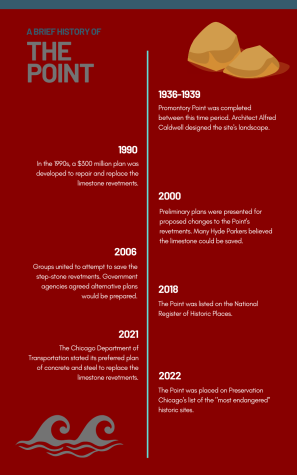
“I love just sitting on either the rocks or trees behind the rocks and just drawing, staring out or reading,” Feya said. “It’s just really a pleasant place to be.”
However, with the city’s plan to tear out the limestone rocks and replace them with concrete slabs, the Point was named on March 9 to Preservation Chicago’s “most endangered” list, an annual list that spotlights sites in danger.
The 40-acre, human-made peninsula is a popular place for swimming and strolling. However, concealed within this joyful ambiance, the limestone revetments have always faced danger due to the lack of maintenance over its long history, which has caused them to erode. In 1980, the Chicago Park District, the City of Chicago and the U.S. Army Corps of Engineers worked to develop a $300 million plan to repair and replace the revetments with concrete.
Ward Miller, executive director of Preservation Chicago, expressed how the concrete is often slippery and doesn’t have the same lifespan as the limestone rocks — 85 vs. 35 years for concrete. Furthermore, repair and rehabilitation is significantly less expensive than demolition and new construction of steel and concrete.
“We feel that this is kind of an insensitive approach to this beautiful spot on Chicago’s lakefront,” Mr. Miller said. “This sort of man-made peninsula that was designed with utmost care.”
Promontory Point Conservancy, an organization dedicated to protecting and preserving the Point, follows a preservation approach to repair and rehabilitate the limestone rocks, rather than demolish them. Founder and president Jack Spicer said that in 2000, the Park District and the City’s Department of the Environment made preliminary plans for proposed changes to the Point.
“I think virtually the whole community was really upset because the Point has always been a really special place for people,” Mr. Spicer said in an interview]. “It’s a place where everyone feels welcome, and they can do what they want to do.”
Over 20 years have passed since the first proposed changes, yet members of the Laboratory Schools community still echo similar sentiments of fear and concern regarding the replacement of the limestone rocks.
Feya fears the removal of the limestone rocks will impact the pleasure she experiences at the Point.
“The Point is one of the few places in Chicago where you can be by the lake peacefully,” Feya said. “I just feel like it is such an important place to every Hyde Parker and Chicagoan in general, and if the limestone rocks were removed, I would be really sad.”
Mr. Miller is glad the list can spotlight the need for groups like the U.S. Army Corps of Engineers and agencies to come together and address replacing the limestone rocks.
Mr. Miller said steps are being taken to speak and write letters to elected officials to continue to shine light on the issue.
He hopes students at the University of Chicago and Lab can join with the Hyde Park community and people who use Promontory Point to highlight the issue.
According to Mr. Spicer, it is not just the limestone that people are trying to save, but the way it has come to be a part of the community’s life and nature.
“When we try to save something, it’s not just the structure we are trying to save,” Mr. Spicer said. “We are trying to save the kind of cultural and community activities and traditions that have grown up around a particular space.”




















































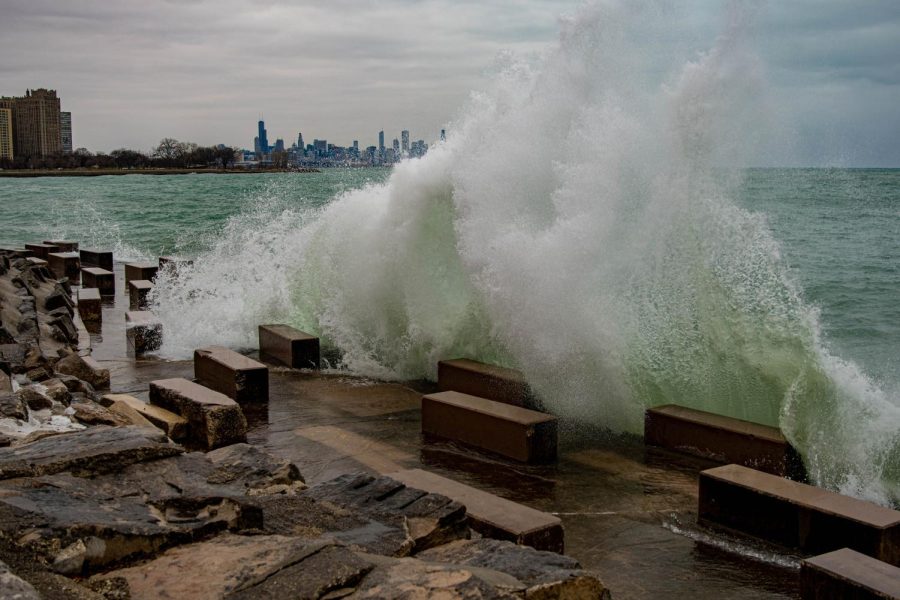
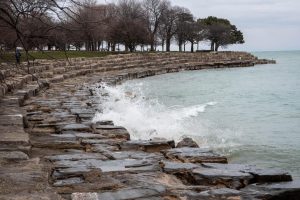

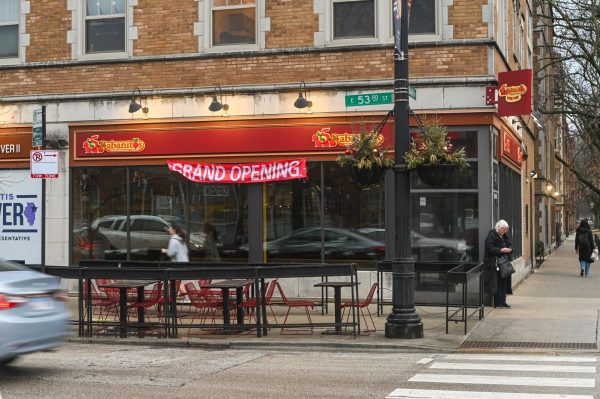
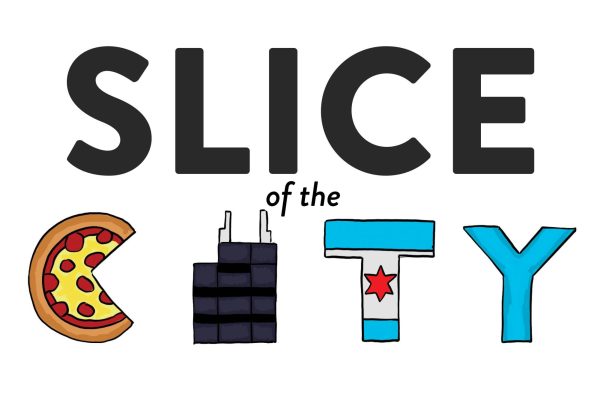


Ross Petersen • Apr 8, 2022 at 11:41 am
The step-stone design is an original feature. I much prefer it to the plummeting edge of the concrete design. Please rebuild with limestone block, it should be faithfully restored, not ‘modernized’.